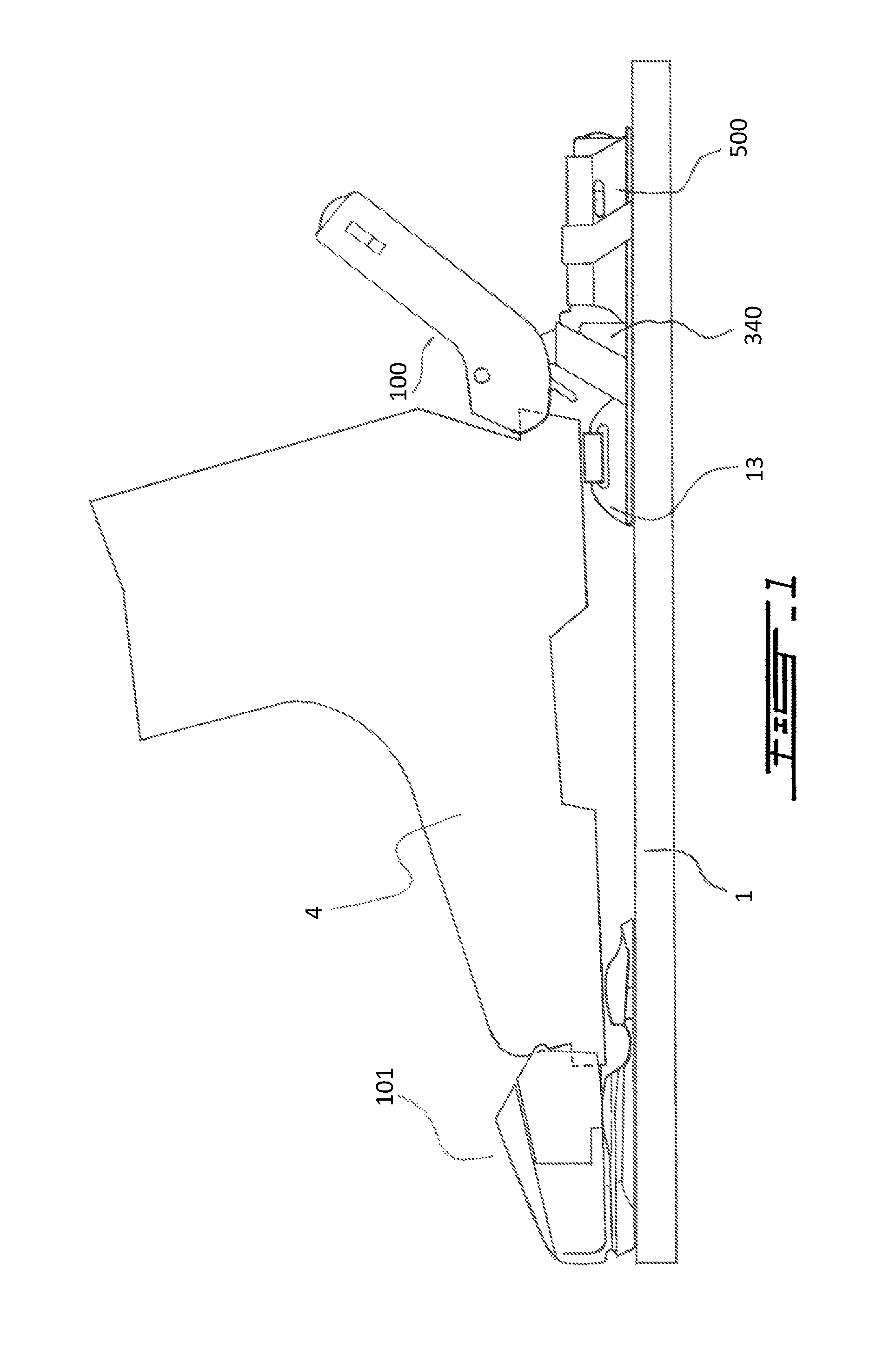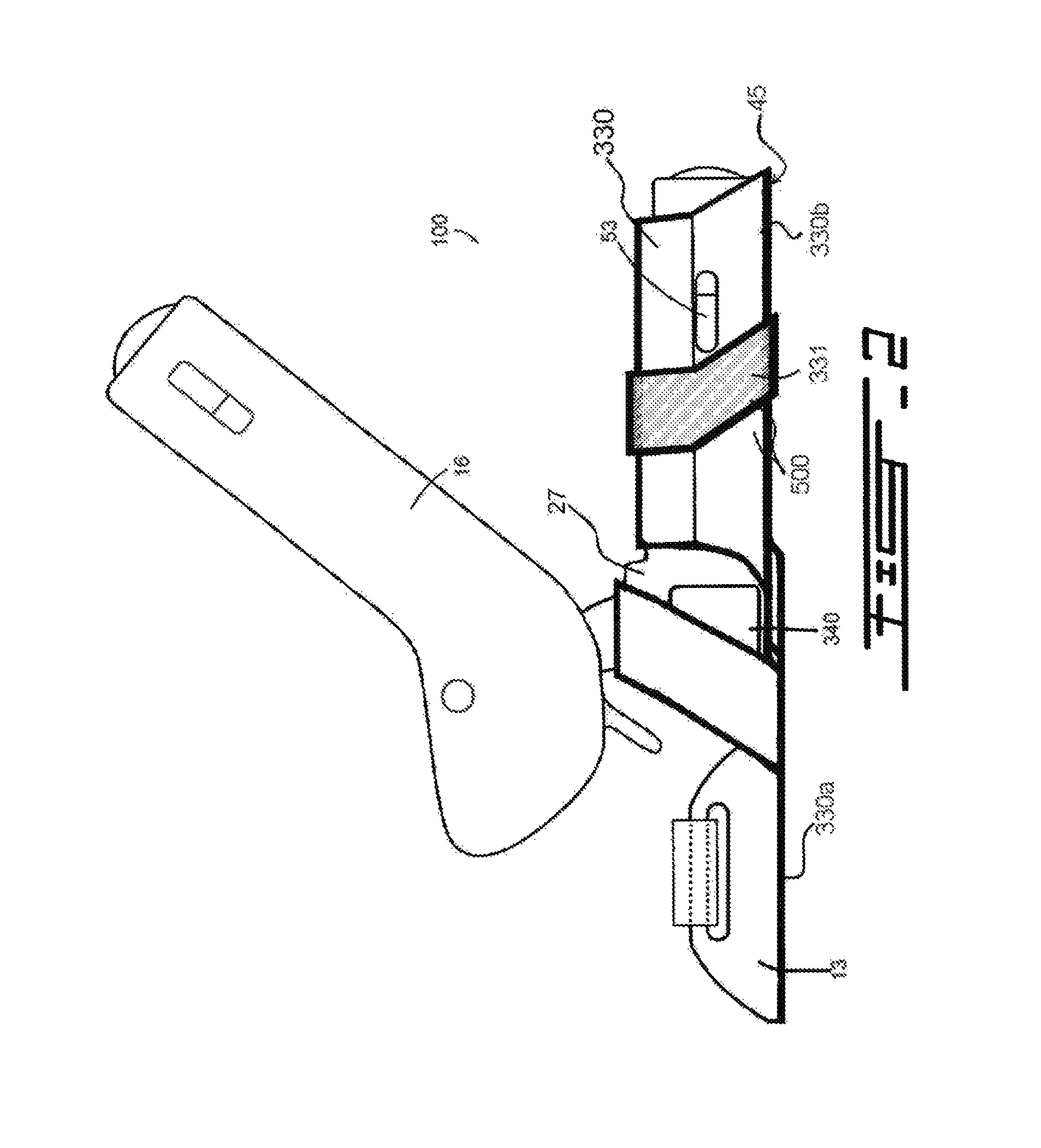Ski binding heel unit
a technology of ski bindings and heel units, applied in ski bindings, skiing, sport apparatus, etc., can solve problems such as more severe injuries, and achieve the effect of reducing the length of the lever arm and reducing the length of the knee injury
- Summary
- Abstract
- Description
- Claims
- Application Information
AI Technical Summary
Benefits of technology
Problems solved by technology
Method used
Image
Examples
Embodiment Construction
[0028]A novel alpine, AT or ‘tech’ ski binding heel unit will be described hereinafter. Although the invention is described in terms of specific illustrative embodiments, it is to be understood that the embodiments described herein are by way of example only and that the scope of the invention is not intended to be limited thereby.
[0029]Now referring to FIG. 1, a ski binding comprising a toe unit 101 and a heel unit 100 is shown. In accordance with the present invention, the top surface of heel pad 13 has been lowered as a result of the lowered support structure 500 that houses the lateral heel release mechanism 340 (FIG. 2) and longitudinal pressure spring 75 (FIG. 7).
[0030]Now referring to FIGS. 2 and 3, the heel unit 100 comprises an upper heel housing 16, a lower heel housing 27, a heel pad 13, and a heel track 330. The lower heel housing 27 contains at least one lateral release mechanism 340. The heel pad 13 is connected or fixed to the heel track 330. The heel track 330 compri...
PUM
 Login to View More
Login to View More Abstract
Description
Claims
Application Information
 Login to View More
Login to View More - R&D
- Intellectual Property
- Life Sciences
- Materials
- Tech Scout
- Unparalleled Data Quality
- Higher Quality Content
- 60% Fewer Hallucinations
Browse by: Latest US Patents, China's latest patents, Technical Efficacy Thesaurus, Application Domain, Technology Topic, Popular Technical Reports.
© 2025 PatSnap. All rights reserved.Legal|Privacy policy|Modern Slavery Act Transparency Statement|Sitemap|About US| Contact US: help@patsnap.com



